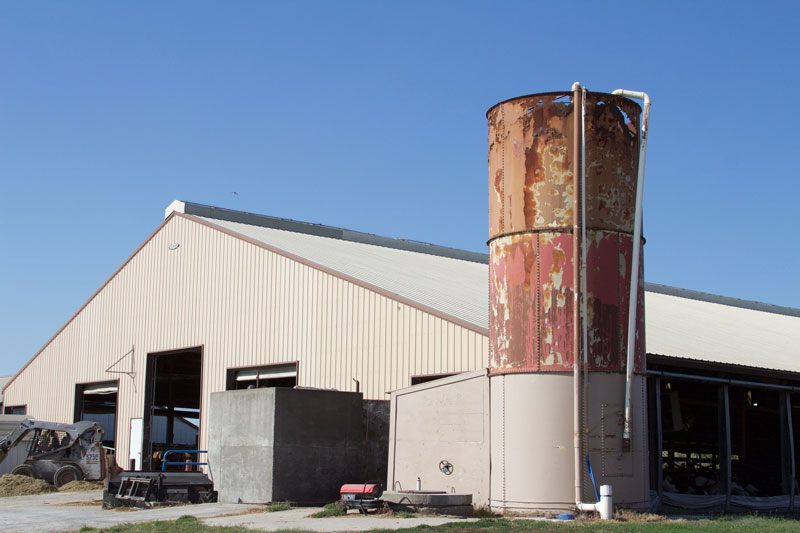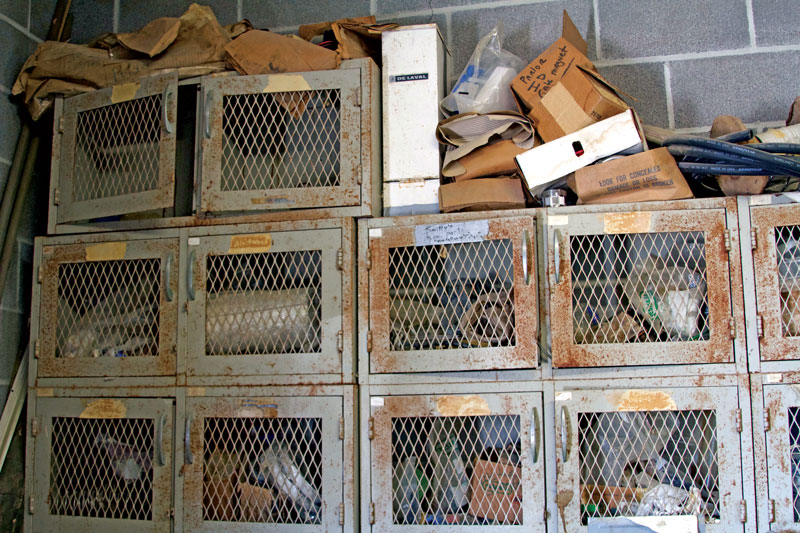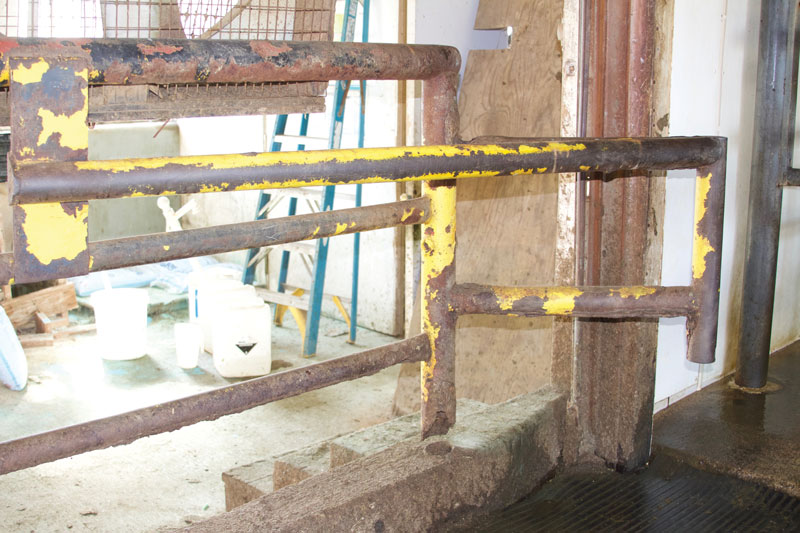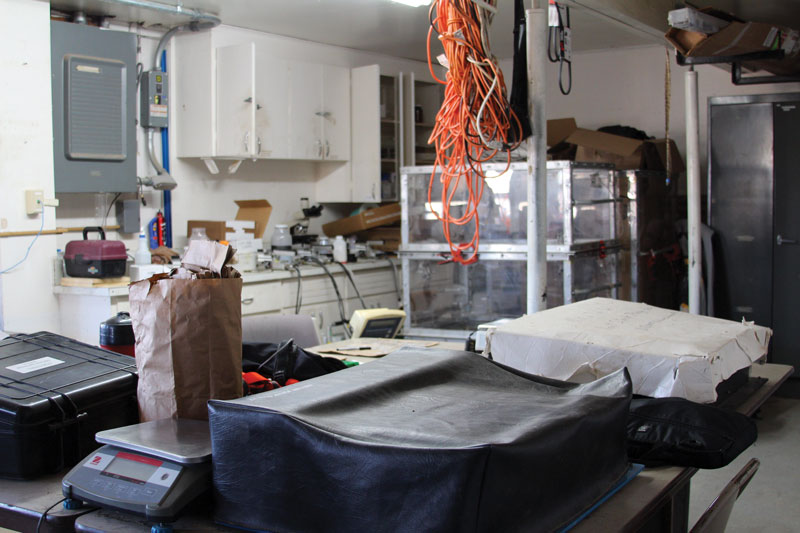
Maintenance Matters
November 5, 2017
Written By Michelle Cummings
With limited funds designated for facility upkeep, universities around the country are facing a mounting backlog of maintenance needs, and farmers could soon feel the effect. The widespread problem of deferred maintenance has the potential to limit agriculture research findings, and ultimately halt future innovations the United States may make in the agriculture industry.
Any postponement of building repairs or a failure to keep technology up to date due to a lack of funds falls under the umbrella of deferred maintenance. A study completed by Sightlines, and sponsored by the Association of Public and Land-grant Universities (APLU), reported more than $8.4 billion in total deferred maintenance occurred in the 91 colleges and universities surveyed around the country.
“At the very least, these failures can cause delays in research work and add extra costs in personnel time and in cost of mitigation,” the APLU report states. “At worst, we are entering an era when the condition of facilities will limit our ability to conduct world-class research that is needed to keep our leadership edge in the agriculture industry.”
The report studied deferred maintenance in buildings used for agriculture, food sciences, veterinary sciences, forestry and human sciences academic programs, as well as agriculture extension sites. Of the schools, 80 percent invest capital into facilities at such a low level that deferred maintenance is all but guaranteed to increase in coming years. The necessary updates to existing buildings and technology have especially fallen behind. Outdated field and research equipment, leaky roofs and faulty heating/cooling units have all been cited as common issues in universities.
“We are woefully behind on our maintenance issues,” says Mark Linit, University of Missouri senior associate dean for research and extension. “Maintaining roads, replacing roofs and mending fences are all issues that we have been forced to postpone due to a lack of funds designated for maintenance.”
Causes
The root of the problem dates back several decades. Many campus buildings in land-grant institutions were built between 1960 to 1975 to house the baby boomer generation. This rapid flux of construction led to a surplus of cheap, poorly constructed buildings. Many of these buildings came due for renovations around the same time. Nearly 70 percent of the buildings built between 1950 and 1975 still need to be updated to match modern standards of functionality and technology. University administrators are now faced with a delicate balancing act of renovating these outdated buildings while simultaneously maintaining newer facilities.
These antiquated buildings have the potential to negatively affect the research that shapes the future of the agriculture industry.
“Our research centers provide farmers with unbiased product information,” says Linit. “The work we do saves farmers money. If we can’t keep up with our research standards, farmers won’t have the latest, correct information to help them make the best decisions with products or methods affecting their crops. They might have to try out something that may cause their crop yield to fail, wasting lots of valuable time and money.”
Land-grant universities have long been looked upon as a reliable source of quality, unbiased research information for farmers and the agricultural community. However, old technology and rundown buildings are limiting the scope and standards of the quality of research conducted at institutions.
“Excellent facilities lead to an excellence in industry impacts and productivity,” says Tim Cross, chancellor of the University of Tennessee Institute of Agriculture. “You need modern, state-of-the-art technology in order to accomplish this goal.”
When academic institutions fail to keep pace with updating their laboratories, greenhouses, equipment and technology, it makes it harder to retain key researchers and extension specialists.
Escalating Competition
“We’re in competition with the private sector (and they) may be able to provide better facilities for researchers,” says Thomas Coon, vice president, dean and director of Oklahoma State University’s division of agricultural sciences and natural resources. “Researchers are going to go where they are best equipped to advance science and make a difference in the agriculture industry.”
A lack of modern research technology can hinder researchers’ ability to do their jobs in an efficient and effective manner and influence the quality of research that is attainable.
“Our research will continue to be accurate, but using old equipment really limits the kind of research that we can get done,” says Robert Gillen, director of the Western Kansas Agricultural Research Centers for Kansas State University Research and Extension. “When we aren’t able to stay on the cutting edge of technology, it may force us to abandon projects we might otherwise have pursued. A lack of modern equipment can have subtle effects on the direction we may take with our research.”
Private firms often work together with land-grant universities on research advancements that provide useful answers for productivity issues farmers face. However, even with strong private sector research, if investment in the maintenance of land-grant research institutions continues to diminish, U.S. agriculture could potentially lose its leadership position in the international arena as other nations play catch up.
China now spends approximately 6 percent, nearly $5 billion more than in 2013, on agriculture research compared to the United States. In recent years, India’s agriculture research investment continues to climb, while the United States investment rate shows a rate of decline.
“There’s no guarantee that the United States will remain the leader of the agriculture industry,” Gillen says. “If other countries put more investments into their research organizations, then eventually our leadership will erode.”
Insufficient Technology
The caliber of future farmers and agriculture researchers is largely dependent on the quality of technology used in their education. Outdated classroom equipment puts students at a disadvantage in an industry where using the latest technology has become increasingly important.
Maintaining the quality of research conducted at agricultural universities and colleges is also a crucial component of preserving an affordable, abundant food supply for U.S. consumers.
“The reason the United States has one of the highest levels of food security in the world is due to the agriculture research our land-grant universities conduct,” says Ian L. Maw, vice president of food, agriculture and natural resources at APLU. “We already struggle with issues of food security in low-income areas, and this problem will only grow with outdated technology making research advancements more difficult.”
Local farmers will also feel the strain of inefficient research advancements. Agriculture profits could decrease with longer labor hours required to yield products and an inability to provide products consistently. With less land, changing weather patterns and fewer resources to feed a projected world population of two billion people by 2050, achieving long-term agriculture research solutions have never been more important.
“Deferred maintenance is often holding up our capacity to conduct research,” says Oklahoma State University’s Coon. “Our research provides critical information that is of strategic importance to farmers and consumers. The research we do is vital for continued food security and food safety in the U.S.”
The Funding Enigma
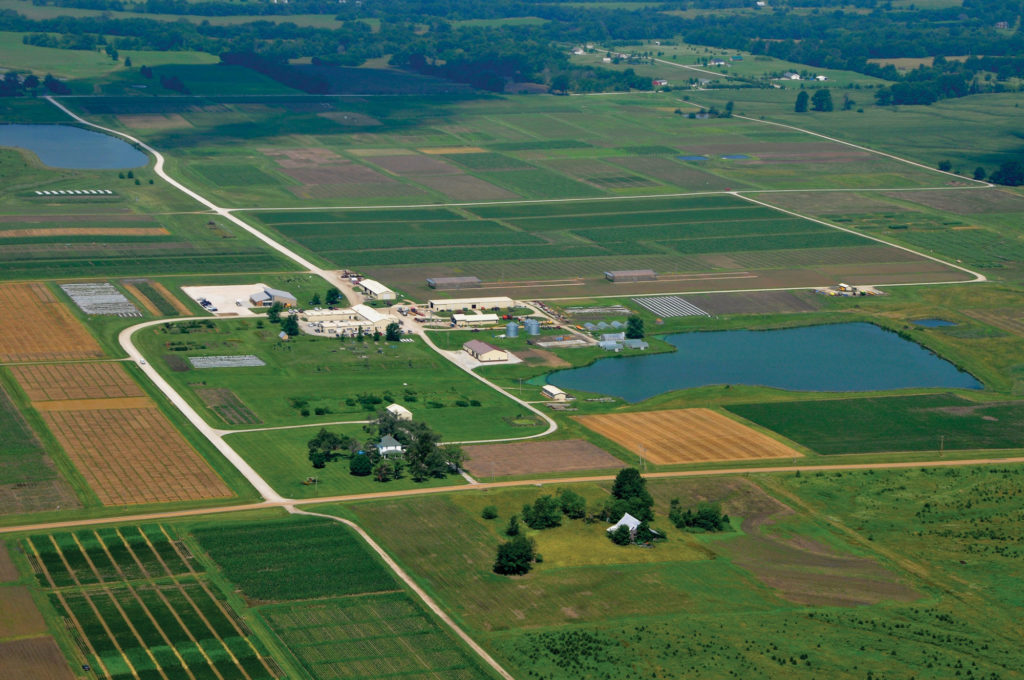
Academic agricultural research programs face a lack of funding for a number of reasons. At many institutions, the sheer amount of problems demanding immediate attention have overwhelmed the school’s maintenance budgets. For example, at Kansas State University, repairs are prioritized by the amount of danger the problem poses. Only issues categorized as a serious or threatening safety concern are prioritized. Others maintenance problems are often postponed until major repairs are necessary.
While grants may provide some relief for the stress placed on state and federal funding for facilities, competition for these awards remains stiff. Additionally, grants are often awarded for specific projects, resulting in the money being spent on researchers’ salaries or other operating costs associated with the project. This means maintenance upkeep funds come solely from already strained budgets of universities receiving lower levels of government funding.
Impacts may not yet be felt by farmers, as many land-grant institutions’ buildings have only recently begun to fall into disrepair, but if the trend continues, the agriculture industry will be severely affected.
“I don’t see an internal solution solving the deferred maintenance issue,” says Linit of the University of Missouri. “We need to partner with the public to receive the funding to maintain quality research advancements.”
Experts agree a simple solution to find funding for deferred maintenance probably does not exist.
“In order for infrastructure problems to be addressed, at least $1 billion needs to be distributed among the land-grant universities annually,” Dr. Maw says. “Such a solution will need to come from a partnership of federal dollars, state funding and a partnership with private entities, such as local farmers, to maintain our agriculture standards.”
While it may be difficult for such a coalition to amass the amount of money needed to address the maintenance issues these public research institutions are facing, the problems associated with deferred maintenance will only grow with time.
The Sightlines study from the APLU recommends a multifaceted set of strategies to address the problem, including: a federal infusion of capital funding to renovate or replace aging facilities currently funded by the U.S. Department of Agriculture; contributions from state governments; and the development of a long-term plan to decrease the deferred maintenance problem through major renovations and taking a proactive approach to maintenance of facilities in good condition.
“To be successful in reducing the deferred maintenance problem and not letting it grow further, key stakeholders need to pursue all of the above,” the report concluded. “A single solution will not work. All levels of government and campuses need to do their parts in solving the deferred maintenance problem. Inaction has, over time, resulted in the problem that schools of agriculture are now facing. The future of agriculture research depends on people recognizing the problem and taking action.”



